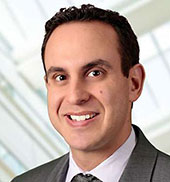On February 6 at the ArcView Cannabis Investment Forum in Santa Monica, California, a panel of leading private fund managers and industry analysts evaluated the booming yet trepidatious cannabis capital markets and predicted the developments that will most significantly impact industry investors in 2019. Barry Weisz, managing partner of Thompson Coburn’s Los Angeles office and founder of the Firm’s cannabis practice group, served as the moderator and was joined by the following panelists:
- Karan Wadhera, managing director at venture capital firm Casa Verde Capital, the leading venture capital firm focusing exclusively on the cannabis industry and related business ventures;
- Margaret Shanley, principal at accounting firm CohnReznick;
- Jason Adler, managing partner at Gotham Green Partners, a private equity firm focused on the cannabis industry; and
- Sean Stiefel, portfolio manager at Navy Capital, which manages the first U.S.-based portfolio focused on the global cannabis sector.
Throughout the discussion, the panelists shared a general exuberance for the monumental growth of the cannabis industry, which Stiefel described as “the greatest opportunity of this generation.” Cannabis capital market transactions exceeded $14 billion in 2018, double the aggregate total from the five prior years combined. While the hype surrounding the industry is palpable, as evidenced by the roughly 500 accredited investors in attendance, institutional investors have remained sidelined due to concerns over federal illegality. When it comes to regulatory reform, the panelists believe change could be imminent.
Stiefel identified three cannabis-based federal government initiatives that may prevail in 2019: banking reform; protection of state cannabis programs; and criminal justice reform. Wadhera predicted cannabis reform will be an issue on the 2020 presidential campaign. Currently, over 85% of all Americans support some form of federal cannabis legalization, and 33 states have legalized medical cannabis use (for a summary of cannabis laws in each state, consult our state-by-state ranking of state cannabis regulations).
The panel focused on three topics:
- Evaluating the scope of investment opportunities;
- Analyzing possible investments; and
- Predicting future developments in the cannabis capital markets.
Highlights from panelist responses are summarized below.
Scope of investment opportunities
Panelists were split as to their preference for plant-touching or ancillary investments. Stiefel explained that his fund primarily invests in plant-touching companies because these companies are more innovative. As a result, Stiefel believes the plant-touching side is a more efficient sector allowing for arbitrage opportunities. Conversely, Wadhera’s Casa Verde only invests in ancillary companies. Wadhera stated such companies are preferable because they are scalable and require less capital, and that the fund’s ancillary-only policy is not due to the legal implications. Nevertheless, ancillary companies must also be mindful of the legal implications of doing business in the space. For example, ancillary companies may encounter issues with their insurance coverage if a claim arises in the course of servicing a plant-touching customer, Weisz noted.
When evaluating the vertical sectors within the cannabis supply chain, Stiefel is most interested in brands and distribution. “Like any consumer packaged good industry,” Stiefel said, “brands and distribution are what determine the winners…Global legal [cannabis] sales in 2018 were between $18-20 billion and we believe will ultimately get closer to $1 trillion. The companies that will really capture the growth are brands and distribution and they will have the most upside.”
Other panelists expressed a preference for technology companies, due to their scalability, and real estate, due to the rent premiums arising from the risk of federal forfeiture. Weisz noted that landlords with cannabis-compliant properties can generate double (or more) the rent that would be paid by a non-cannabis client for another use. Cannabis real estate presents a unique set of opportunities and risks for landlords and tenants, as discussed previously on Tracking Cannabis.
Stiefel noted a general preference in the capital markets for equity investments rather than debt. “We’re all trying to underwrite pretty big returns and there’s not a lot of debt instruments that correspond to the equity underwriting that we’re doing,” he said. Stiefel praised convertible debt as a way to give investors a floor on their investment. As cannabis businesses often have good, hard assets, he explained, “loan-to-own investments allow an investor to theoretically go in and take some assets and get their cash out of the business.”
Analyzing investment opportunities
Shanley warned investors to be wary of a cannabis company’s financial statements as they are often a challenge to verify. In evaluating financial metrics, investors should pay particular attention to free cash flow and capital expenditure requirements, she explained, as these can be more easily verifiable and are crucial for the viability of the company. To properly evaluate a cannabis company, Shanley advised, investors should carefully consider various non-financial factors such as board composition, corporate governance, and management team. To Stiefel, the management team is the most important factor of all. “You’re betting on people,” he said, “whether that management team can execute and do they have that killer instinct.”
Another crucial factor, Adler explained, is alignment with the investor’s vision and values. His fund, Gotham Green, focuses on how the company being evaluated fits into the Gotham Green ecosystem. Casa Verde takes a similar approach, Wadhera said, looking for a shared vision and closely assessing whether its future plans are aligned with those of the company.
When evaluating a company, it’s also crucial to look for red flags which may be more subtle and difficult to detect. Stiefel highlighted management selling their shares and management acting irrationally as two of the biggest red flags (additional red flags were discussed previously on Tracking Cannabis). He suggested such behavior is a regular occurrence, saying “[t]here will be several textbooks written about some of the things that have gone on in the Canadian public markets in the past 12 months.”
Predictions
Stiefel emphasized that companies will only be able to differentiate themselves if they develop a strong brand and relate to the consumer. As a result, he expects to see more capital being deployed into brands, particularly to develop consumer experiences and loyalty. He also notes that social equity programs will be critical, as governments’ path forward will be through criminal justice reform.
While the industry continues to grow, Adler predicts a looming distress cycle fueled by companies that received funding, incurred significant capital expenditures, and are unable to support their infrastructure. Adler anticipates this will provide opportunities to investors who are looking to buy distressed assets and stabilize the business, and will lead to significant levels of distressed debt in the cannabis capital markets.
With multiple states having passed cannabis legislation in 2018, including Missouri and Michigan, and new states expected to enact medical and recreational cannabis programs in the coming year, Shanley anticipates an increase in public acceptance for cannabis. She notes there is currently a large consumer base that doesn’t understand the benefits and variety of cannabis products. This extends to medical cannabis, where consumers do not yet understand the benefits of the various products. She anticipates the growing acceptance will result in a massive new consumer base.
Several panelists touted the overseas opportunities for cannabis industry investors. Wadhera emphasized the outsized opportunities for international growth, particularly in Europe, where 14 countries currently permit medical cannabis. “Europe will be massive and will move quicker than North America,” he said, predicting at least one European country to legalize recreational cannabis in 2019. Wadhera believes the United Kingdom will be the barometer for the rest of Europe and Africa, as other countries will look to the U.K.’s approach for guidance. In 2019, as cannabis’ stigma declines, Wadhera expects better management teams to emerge in these international regions and cannabis programs to develop throughout India, Africa and Asia.
















